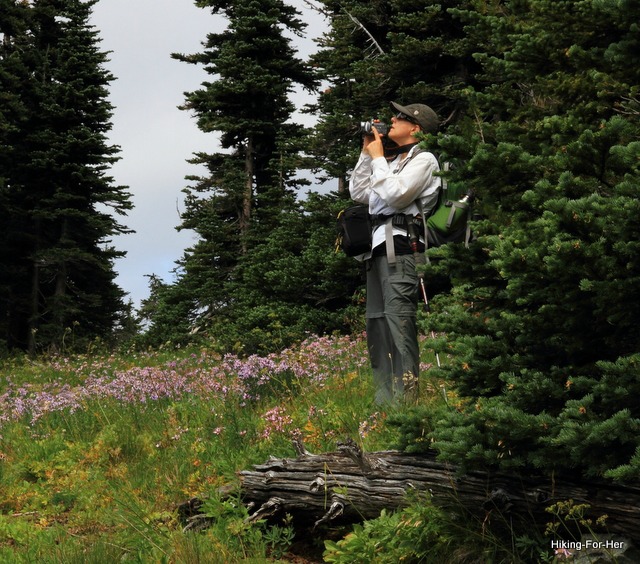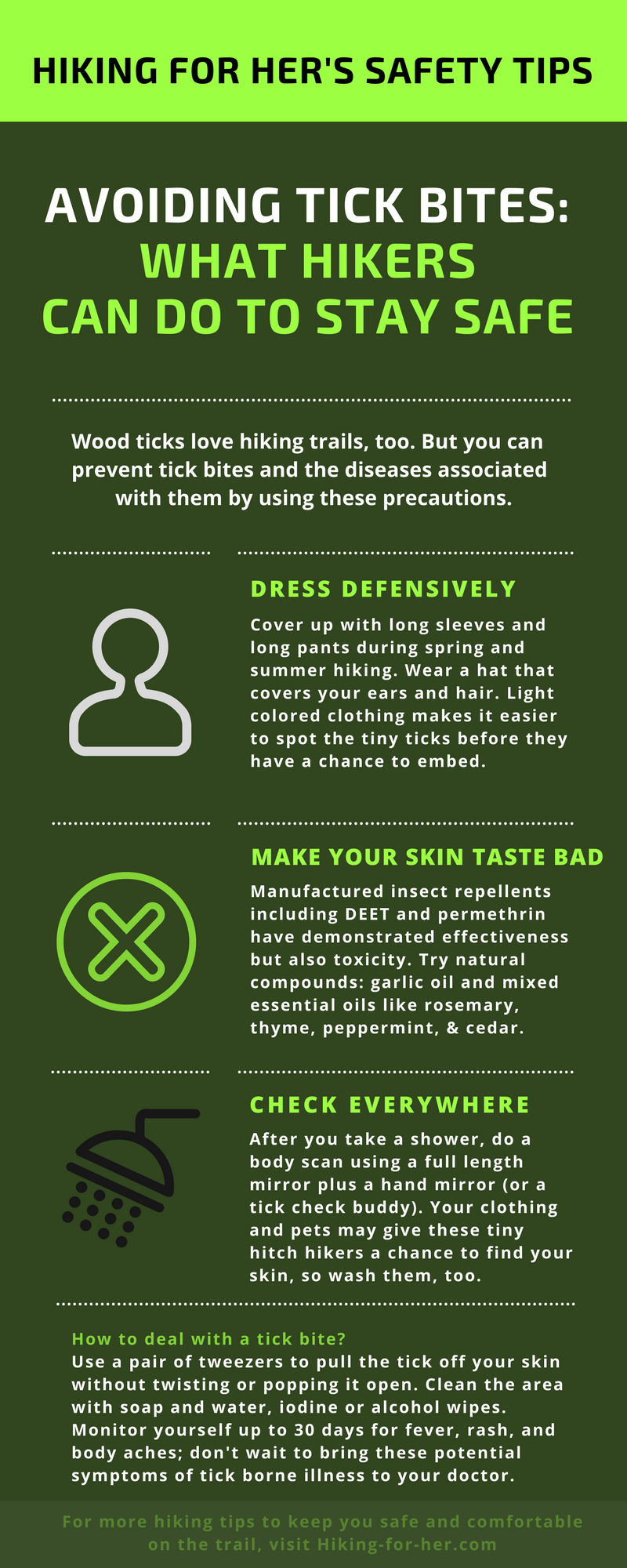
Tick Bites and Lyme Disease:
Hikers Need To Know This
By Diane Spicer
Two words for the connection between tick bites and Lyme disease:
Borrelia burgdorferi.
Say what??
It's a mouthful, alright, and it's the reason tick bites and Lyme disease are associated.
Borrelia is the type of bacteria which causes Lyme disease (borreliosis).
But how does this bacteria get into your bloodstream to make you sick?
A tiny ticking time bomb
It has a little help.
And by "little", I mean a tiny deer tick the size of a sesame seed, infected with the bacteria.
- This
tick bites you - nothing personal - just looking for a blood meal and
you happen to hike through the long grass where the tick lives.
- Borrelia is transferred via the tick's saliva into your body.
And that's why you want to prevent tick bites (best case scenario) or safely remove an engorged tick (2nd best, and requires surveillance of the bite area for several weeks).
Let's talk about prevention first. You don't want to let a tiny thing like a tick prevent you from getting into the outdoors, do you?
Prevention of tick bites and Lyme disease
There are four strategies you can use to increase your odds that you won't be bitten by a wood tick during your spring or summer hikes.
Geography & season
Know whether/not the area you will be hiking in is a hot spot for ticks.
Geography and season are key.
The Centers for Disease Control and Prevention (CDC) has some information to help with that.
Dress defensively as a hiker
 Note the defensive dressing to prevent tick bites: long sleeves, long pants, long hair tied up under a hat.
Note the defensive dressing to prevent tick bites: long sleeves, long pants, long hair tied up under a hat.Here's how to dress defensively.
- Light colored clothing with long sleeves and
long pant legs will help you see the tiny dark ticks before they embed in your skin.
- Tuck your pant legs into your socks - not exactly a fashion statement, but you want to prevent any exposed skin from enticing a tick into hitching a ride on you.
Chemical maneuvers
Permethrin (long lasting on boots and clothing ) and DEET (must be reapplied frequently to skin) are recommended repellents.
I have my doubts about their long term safety, especially with children. I've used NEEM oil and other plant based repellents in the past with good results.
Post-hike tick check
After your hike, do a tick check ALL over using a full length mirror and a hand held mirror.
- Pay special attention to your hairline
and creases in your skin in the armpits, groin, waist, and limbs.
- Be aware that ticks can burrow in and won't fall off for several days until they're engorged, so check your clothing, linens and bedding, too.
Do a thorough check of anyone who came along on your hike, especially children and dogs.
Dealing with a tick bite
Sooner or later, despite all of your precautions, you may find a wood tick embedded in your skin.
Don't panic.
Instead, use these steps to minimize the chances of a localized infection or Lyme disease.
Remove the woodtick from your skin carefully
Remove the tick safely with these tips from CDC.
- That link will give you the proper procedure for wood tick removal.
- If you're still out in the back country, you'll whip out your
fine-point tweezers and a zip lock bag (your 1st aid checklist includes
these items for this reason).
- Don't use a hot match or petroleum jelly
to remove the tick, it only encourages it to dig in deeper, thus
exposing you to even more saliva.
- For the most peace of mind after the bite, you can send the tick to be tested for Borrelia. Check with your local health department for instructions.
Wash the area
Wash the bite area thoroughly with soap and water.
- Remember that tick bites and Lyme disease go hand in hand, so wash your hands, too.
Keep checking
Monitor the site for the next 30 days for the development of a flat red rash that begins at the bite mark and spreads in a circular pattern (erythema migrans, literally "red moving").
- On some people the rash has a "bulls eye" appearance with a clear center, but not every rash looks that way.
- This red patch of skin will not itch, and you may not even notice it if you're not looking for it.
- The rash will fade away within weeks, although new
patches can pop up later elsewhere.
- And not everyone gets the rash, which is too bad because it's an important early warning sign of Lyme disease.
Watch for these symptoms
Note any
If you experience any of these things, head to a doctor's office for a blood test.
Be sure to mention that you've been in the outdoors recently, even if it was just mowing the long grass in your own backyard.
As much as I hate to do this...
I must be the bearer of bad news.
Tick bites and Lyme disease are not your only worry on a densely wooded or grassy hiking trail.
Ticks can also transmit other diseases to humans, including these:
As with Lyme disease, geography and time of year matters in terms of your risk of exposure to these pathogens.
Using the suggestions for limiting the chances of contact with ticks is absolutely the way to go for hikers who are serious about avoiding tick borne diseases.
You might also want to consider altering your seasonal hiking plans to avoid long grass, hiking trails that aren't brushed out, or sitting on logs and stumps beneath the tree canopy.
Don't despair, just take precautionary measures and make a thorough whole body tick check after a hike part of your regular trail routine.
For more safety tips on the hiking trail, go here.
Home page > Best Hiking Tips >
Tick Bites and Lyme Disease
|
I get emails all the time about what I wear, eat, carry and love to use on the trail. That's
why I provide affiliate links to you: the best gear that I use myself and have seen used by other hikers is instantly
available for your consideration, and the gear company sends a few
pennies per dollar to this reader-supported hiking website. There is no added cost to you! Everyone ends up a winner: Great gear for you, strong gear companies, and more free hiking tips for everyone. Thanks very much for your support. It's warmly and sincerely appreciated. It also helps send these hiking tips to all your virtual trail buddies around the globe. |
 |


